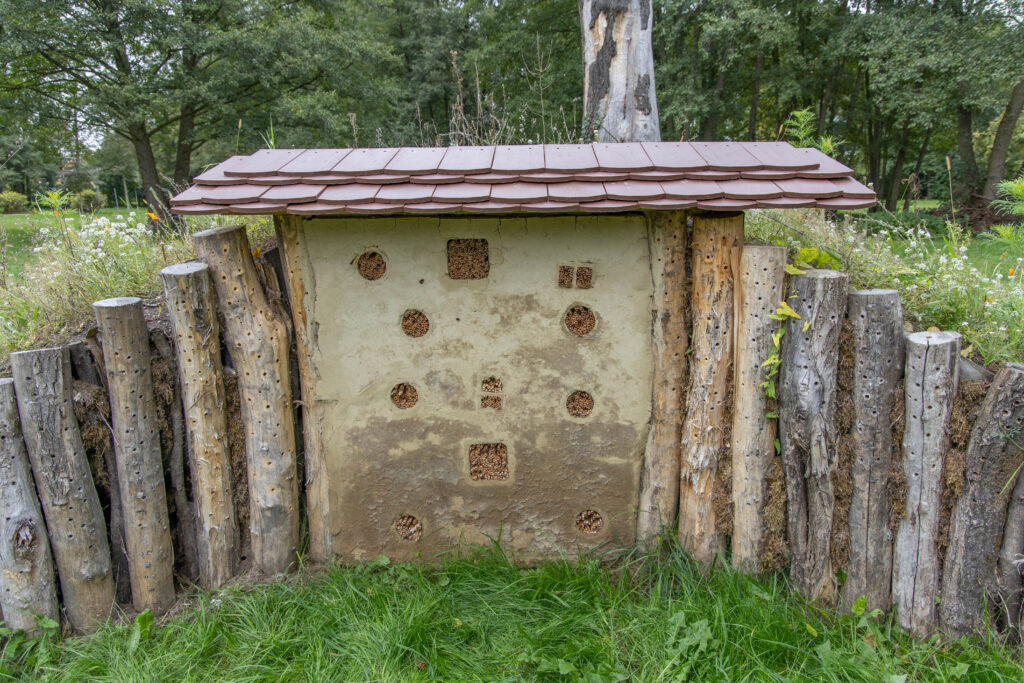Bee tree bench and castle in the park
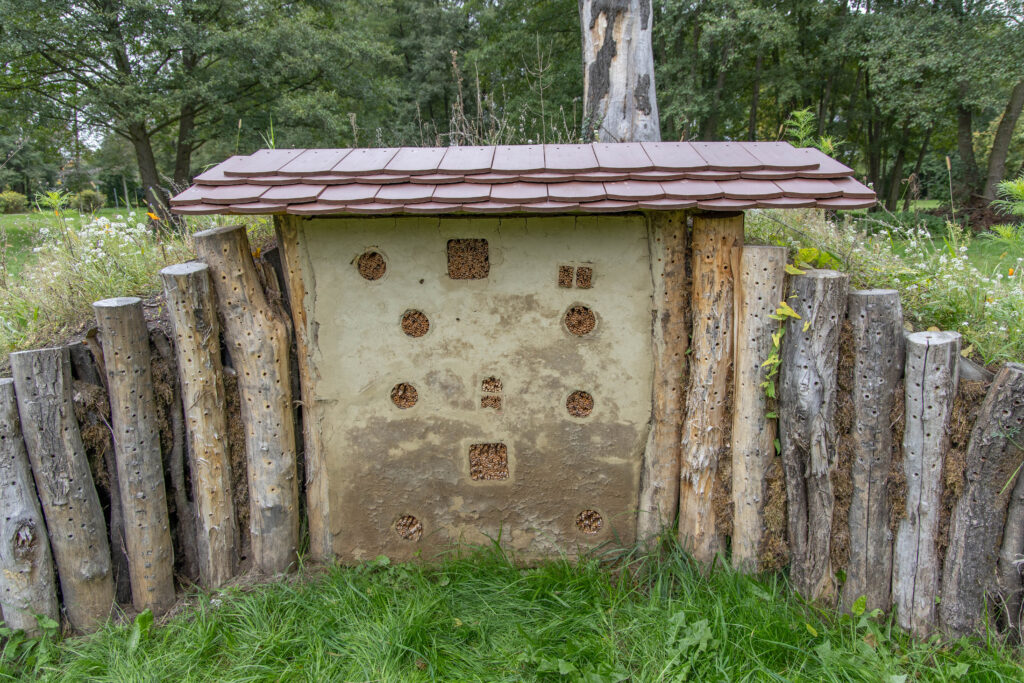
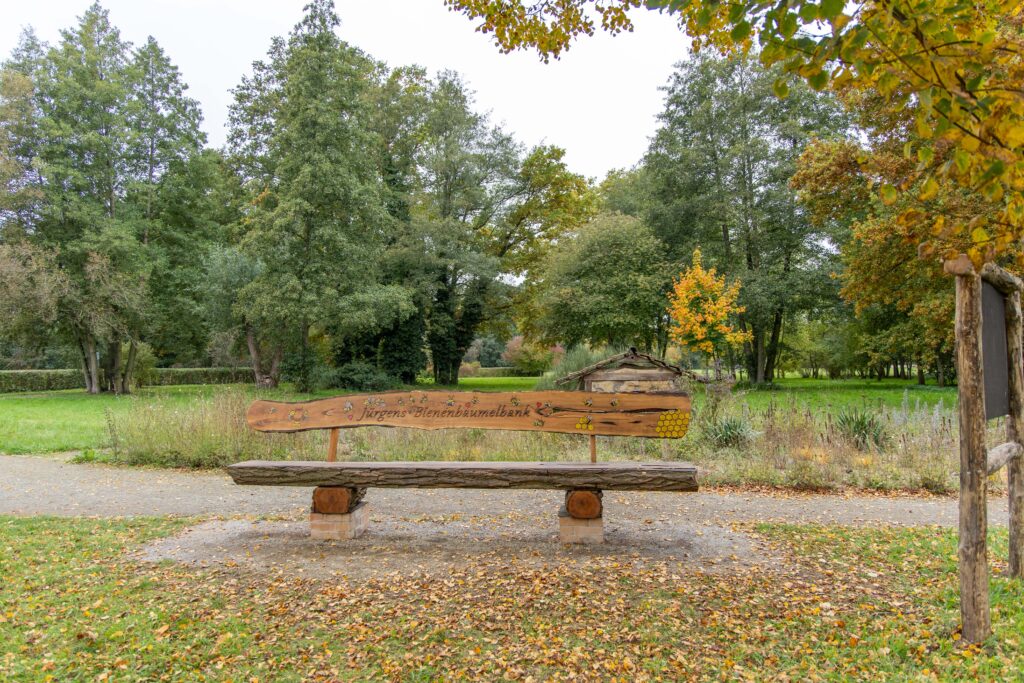
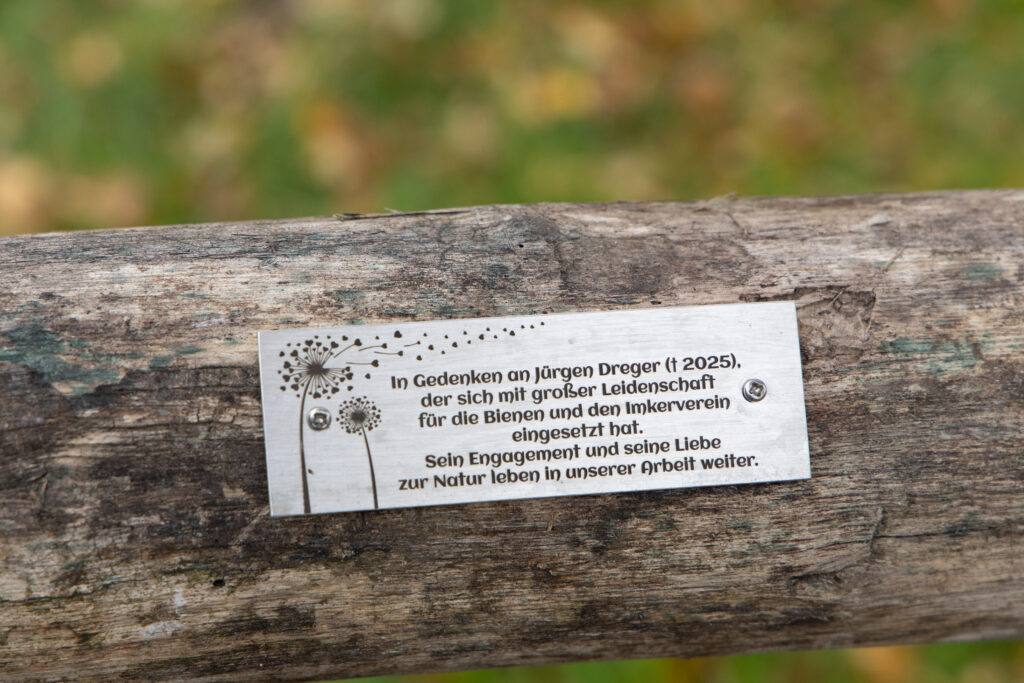
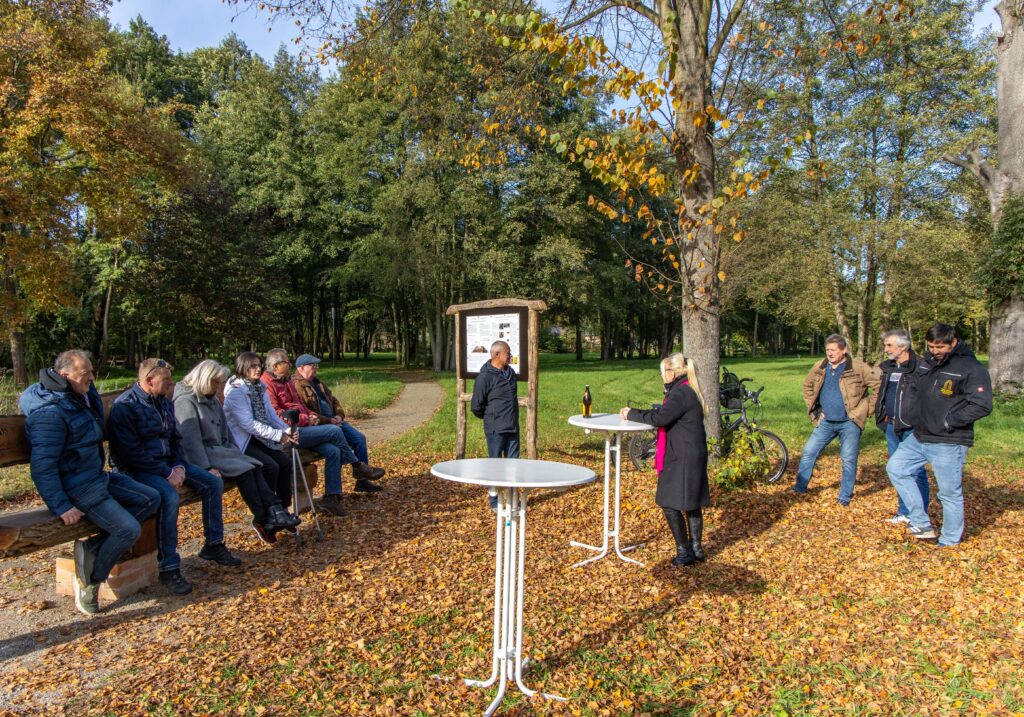
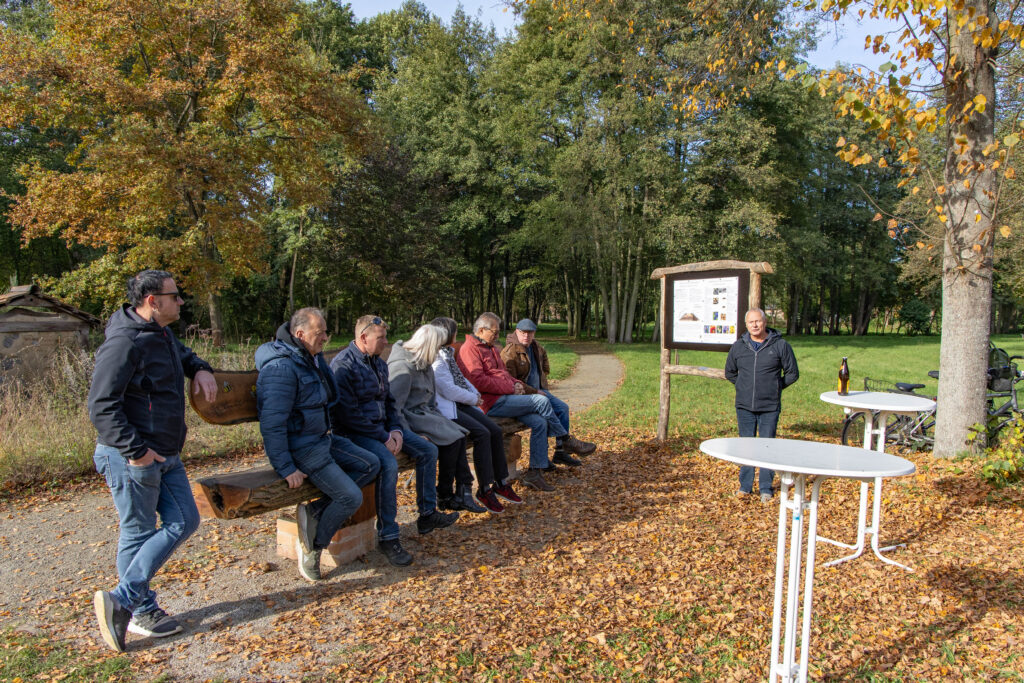
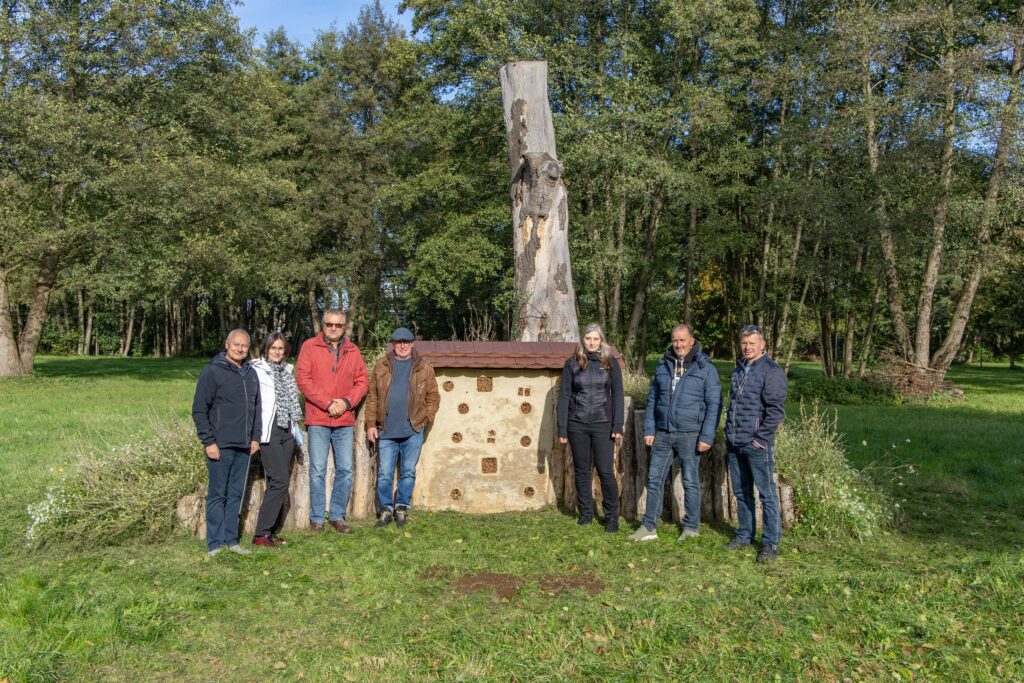
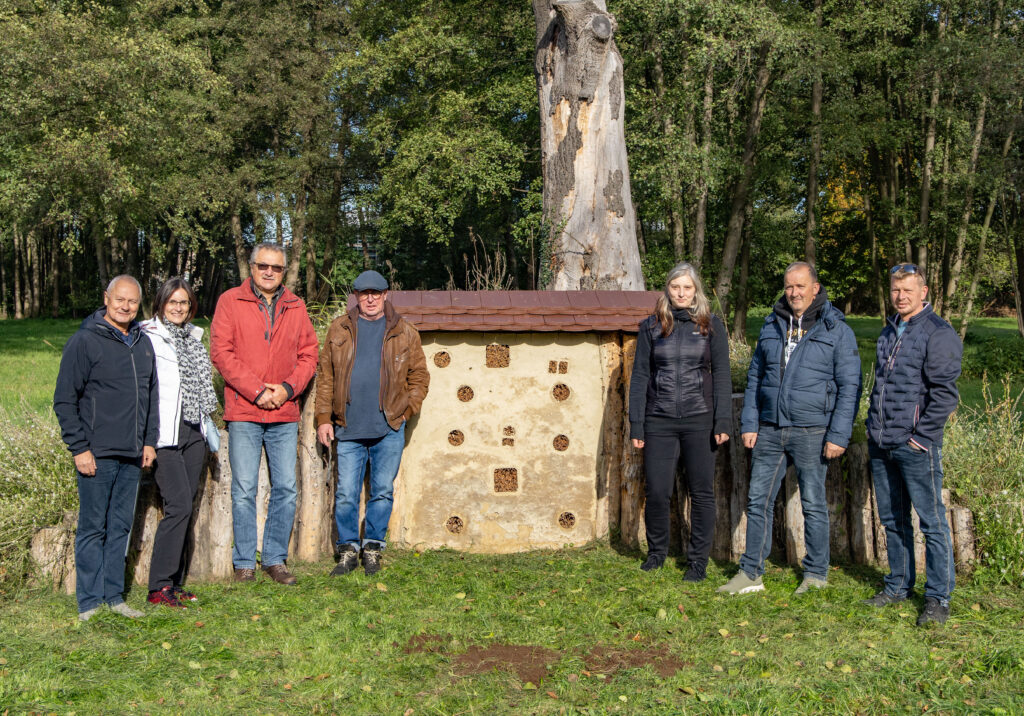
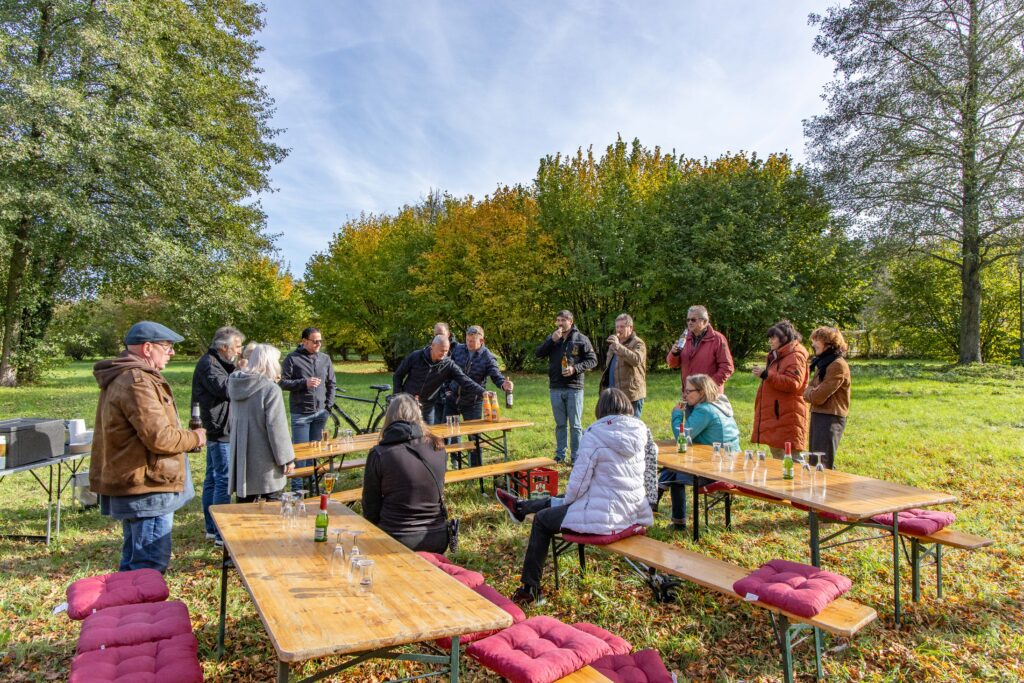
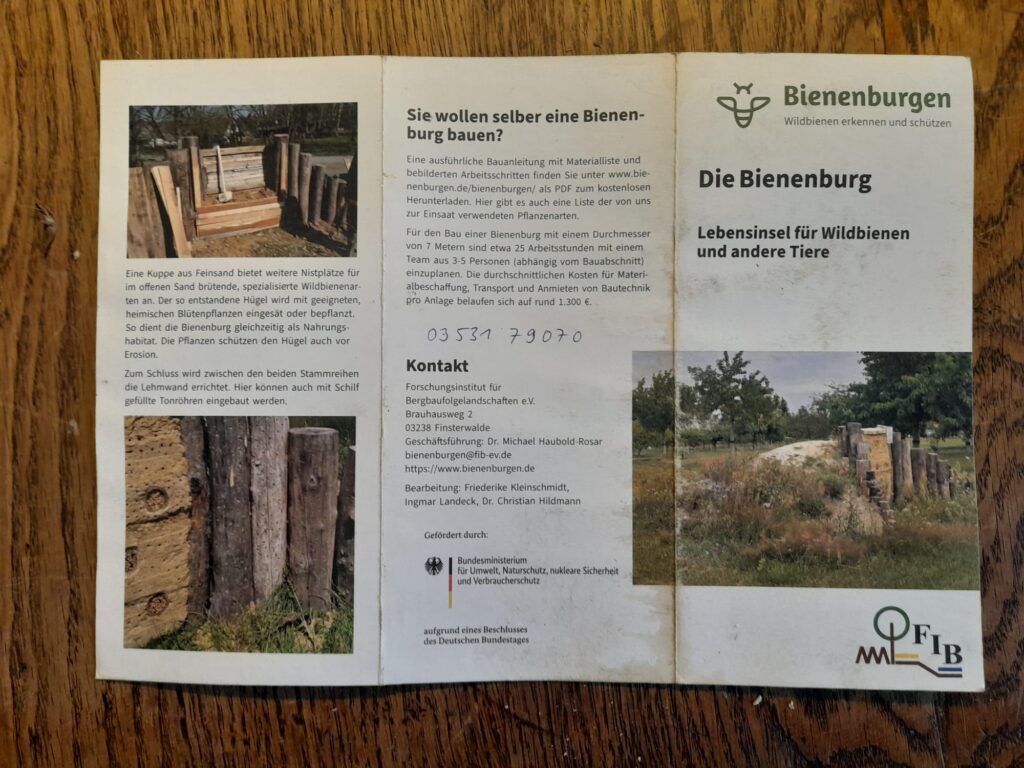
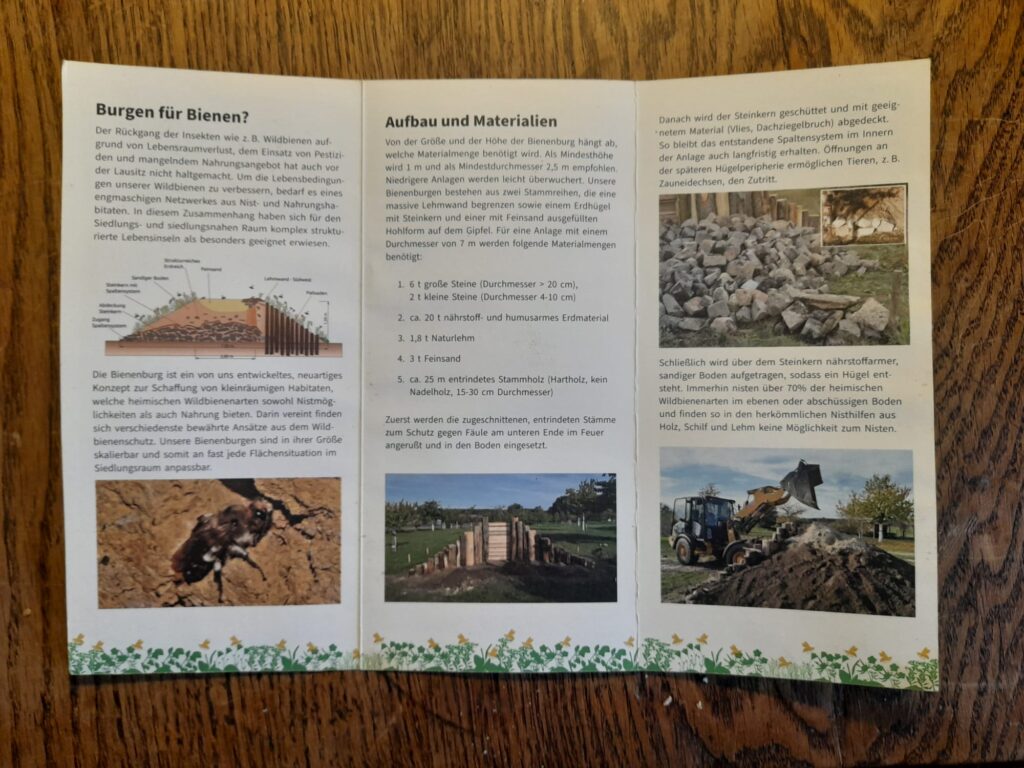
In beautiful fall weather, beekeeping friends from Burger met in the spa gardens to inaugurate their recently completed bee castle with champagne and snacks. Just in time before winter makes life difficult for insects, especially wild bees. Heinz Tscheslog, chairman of the local beekeepers’ association, thanked everyone involved for their selfless commitment and for investing so much of their free time in the construction of the ensemble.
The numerous holes in the robinia and oak trunks on the south side of the castle are immediately assigned to wild bees as a shelter, as is the clay wall with numerous larger and smaller openings. “We also want to provide a habitat and shelter for other insects and small animals, which is why we chose this castle as a home,” explains Jens Möbert, one of the initiators. “We want to counteract the ever-shrinking habitat of our native insects and thus work to protect the species. The interior of the wall contains broken bricks and natural stones that form numerous cavities. The interior is accessible from the outside through tubes. In winter, the interior offers protection from the cold and wet, and amphibians, reptiles and other small animals will also find shelter inside.” A thick layer of soil covers everything, on which insect-friendly flowering plants thrive.
The mayor of Burger, Jürgen Dreger, who died at the beginning of the year, was also a committed beekeeper who wanted to promote this project, but unfortunately fate had other ideas. Heinz Teschslog: “I think we dedicate this building to our Jürgen. That’s why we added a large bench to the castle, which we called Jürgen’s bee tree bench. I’m sure he would have loved to watch the colorful insects from a bench.”
Visitors to the spa park and patients of the adjacent rehabilitation clinic can now watch the insects in appropriate weather conditions. A documentation wall provides information about the reason for and purpose of the Bienenburg. Perhaps one or two visitors to the park will take home some ideas about insect protection, and perhaps the ensemble will make them think a little more about nature and nature conservation.
Peter Becker, 19.10.25
